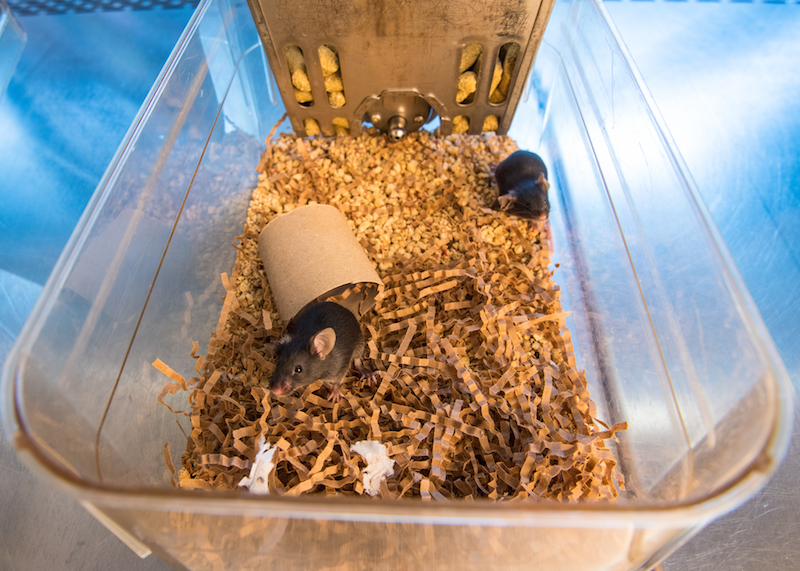New study conducted by U-M, Yale researchers underscores the importance and relevance of the mouse for studying influenza with aging.

Scientists eager to reduce the brutal burden of flu on the elderly may have a new target: an immune cell in the lung. A Michigan Medicine team, with colleagues from the Yale School of Medicine, recently published an article examining aging’s effect on influenza-induced mortality in the Journal of Immunology.
“We found a mechanism by which aging may lead to increased susceptibility to influenza infection,” says senior author Daniel Goldstein, MBBS, director of the Michigan Biology of Cardiovascular Aging program at the Frankel Cardiovascular Center.
Goldstein’s team, with first authors Candice Smith of U-M, a research fellow in internal medicine, and Christine Wong of Yale, reports the alveolar macrophages in the lungs contribute to mortality with aging. They made the discovery in mouse models with influenza.
“This study suggests therapies aimed at improving the function of alveolar macrophages may help older people resist influenza viral lung infection,” Goldstein says.
Starting at a Disadvantage
The alveolar macrophages function as the lungs’ broom, clearing debris to fight infection. The lungs of the elderly mice, though, had fewer alveolar macrophages than their younger counterparts. These cells are needed for lung homeostasis.
“The transcriptional landscape of the cell is vastly altered by aging, but we’re not sure why yet,” says Goldstein, the Eliza Maria Mosher Collegiate Professor in Internal Medicine and a research professor at the Institute of Gerontology. “We found the enormous difference begins even before infection of these cells in the lungs.”
Researchers say impaired cell turnover with aging likely contributes to the reduced alveolar macrophage numbers in the advanced aged mice. After infection, though, the amount of alveolar macrophages in the lungs further reduced across the age groups.
An Impaired Immune Response
Fighting a new infection with a smaller alveolar macrophage count, Goldstein says the previously healthy elderly mice were hindered in their immune response. Researchers report aging has actually impaired a process of absorption in the cells, spurring what they’ve termed “defective phagocytosis.”
A week after the influenza viral infection, the study found a much higher mortality rate for the advanced age group (80 percent) compared to the aged (50 percent) and the young (25 percent).
In the elderly, researchers found additional complications including lung damage and evidence of inflammation. But there was no significant difference in damage to other organs among the age groups.
Aging also led to increased retention of neutrophils, a type of white blood cells. In an influenza viral infection, a large amount of neutrophils will damage the lungs.
“This finding suggests morbid complications from influenza caused death, not systemic organ failure,” Goldstein says. “It indicates the alveolar macrophages’ efforts to limit lung damage during the infection are impaired.”
Next Steps
Goldstein says future studies may investigate therapies to improve the function of the alveolar macrophage, as it may improve outcomes among the elderly infected with influenza and other respiratory viruses.
While it contrasts the findings of one recent study, Goldstein’s team’s paper is in line with two other prior articles, along with related clinical studies that report elderly people have higher morbidity and mortality during an influenza infection.
“The paper underscores the importance and the relevance of the mouse for studying influenza with aging,” Goldstein says.
This story was originally published by the Michigan Health Lab Blog on July 17, 2017.